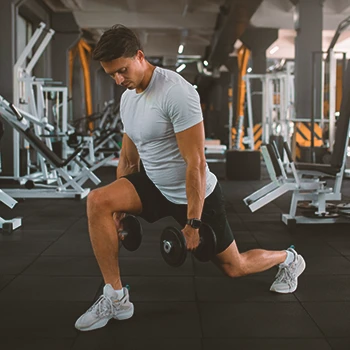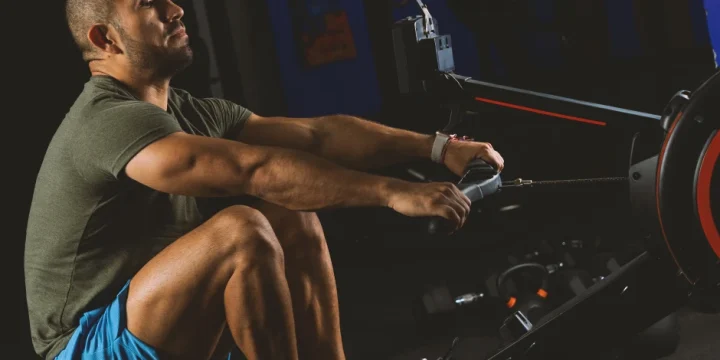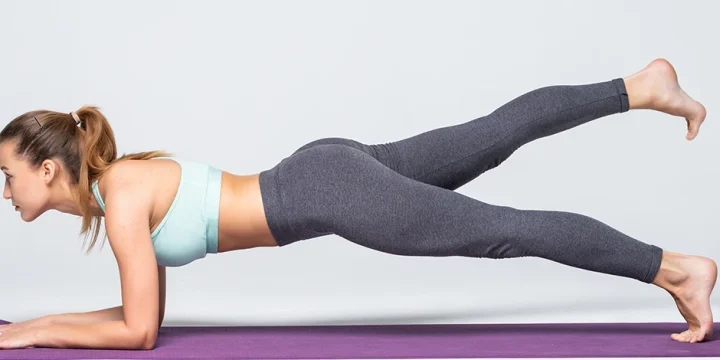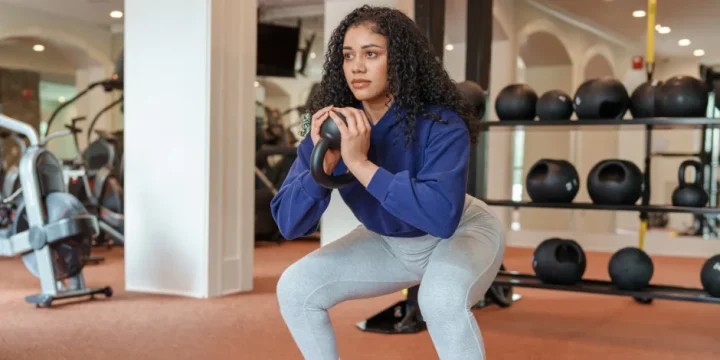Among the many fitness program options, the decision between CrossFit and High-Intensity Interval Training (HIIT) stands out as a prevalent conundrum among fitness enthusiasts.
As an experienced fitness trainer and after investing months in extensive research, I aim to alleviate confusion and determine which approach, HIIT or CrossFit, aligns better with your fitness goals.
Quick Summary
- CrossFit primarily centers around resistance exercises, while HIIT emphasizes aerobic exercises more.
- To determine the best fitness approach between High-Intensity Interval Training (HIIT) and CrossFit, consider that CrossFit focuses more on resistance exercises, while HIIT emphasizes aerobic exercises.
- According to a study published in Science Direct, HIIT is particularly effective for fat loss due to its high-intensity bursts and short recovery periods.
- Personally, I find HIIT to be a more flexible and time-efficient workout option, especially for those with busy schedules.
What is the Main Difference Between HIIT and CrossFit?

The main difference between HIIT and CrossFit is that the first is a training system that can be incorporated into various workout routines.
In contrast, CrossFit is a competitive sport encompassing different training methods, including HIIT and resistance training.
Cardiovascular Focus
According to Science Direct, while HIIT and CrossFit can improve cardio health, HIIT prioritizes cardio and has been proven to reduce cardiovascular risk factors [1].
The HIIT workout’s rest intervals and shorter durations can help cardiac patients finish the workout and provide enhanced heart stimulation [2].
Weight Loss
While both HIIT and CrossFit are effective in burning calories within a condensed time frame, burning fat with HIIT proves to be particularly effective.
“If you’re ready to begin a workout plan and haven’t maintained fitness for some time, HIIT training is a great place to start. If you’re ready to push yourself further and build off the base you’ve developed, Crossfit would be a fun challenge and could also guarantee results.”
- John Kelley, Doctor of Medicine
Frequency and Intensity

Most fitness experts recommend limiting workout sessions to a maximum of three per week due to the high intensity of these sessions.
However, it's important to note that although HIIT workouts are intense, they still fall short compared to the typically higher level found in CrossFit training.
From my own experience, I can attest to the demanding nature of CrossFit workouts. Each session pushes me to my limits, challenging not just my physical strength but also my mental endurance.
Variety
When it comes to variety, CrossFit outshines HIIT by offering a more comprehensive array of options.
CrossFit workouts can be customized to accommodate different preferences and goals.
Over the years, I've tailored my workouts to align with my evolving fitness goals and preferences. Whether I'm focusing on strength, endurance, or agility, CrossFit's versatile nature allows me to create a regimen that keeps me engaged and progressing.
Muscle Growth and Strength
CrossFit holds a notable advantage over HIIT training regarding hypertrophy and strength gains.
This latter excludes most weighted exercises because of the risk of injury and the short rest intervals.
“One of the many benefits of HIIT is that it increase the proportion of fast-twitch muscle fibers over slow-twitch muscle fibers. Why is this important? Fast twitch fibers are a main factor of your strength and speed. They are also very important to train in that if you don’t use them, you lose them, especially as you get older.”
- Kyjean Tomboc, Health Copywriter
What Are the Similarities Between HIIT and CrossFit?

The similarities between HIIT and CrossFit are their shared focus on functional movements and their ability to burn calories effectively.
Other common ground these training methods share in common:
- Versatility - Versatility is a shared characteristic between HIIT and CrossFit, as they can be adapted and implemented effectively with or without using weights.
- High intensity - Both HIIT and CrossFit involve individuals engaging in movements at a high-intensity level.
- Increased Metabolism - Both increase VO2 Max (the amount of oxygen your body uses while exercising as hard as you can) and improve metabolic conditioning [3, 4]. Individuals can enhance their body's ability to efficiently utilize oxygen by using these training methods.
- Endurance - HIIT and CrossFit may effectively improve an individual's stamina and ability to sustain physical exertion for extended periods.
- Improved functional fitness - Both training methods prioritize compound movements that engage multiple muscle groups and mimic real-life activities. This enhanced functional fitness translates into better performance and efficiency in everyday tasks and sports.
- Injury rates - While any form of high-intensity exercise carries inherent risks, research in the Sage Journals has shown that CrossFit has the same injury rates and health outcomes as other high-intensity exercise programs [5].
“And while CrossFit is sometimes criticized for causing injuries, that shouldn’t necessarily be the case. The CrossFit Games made people [who weren’t necessarily ready] want to try it. But remember, those are athletes – not everybody is at that point. If done correctly, CrossFit doesn’t have to be a bad thing.”
- Nick Parkinson, Athletic Trainor
Advantages of HIIT and Crossfit

CrossFit
In my time practicing CrossFit, I've experienced its diverse range of benefits firsthand. It's not just about cardio and fat loss; the integration of strength training, gymnastics, and plyometrics has significantly improved my overall fitness.
Examples of CrossFit exercises include box jumps, Plyo push-ups, and Olympic lifts.
In addition to the positive physical outcomes, CrossFit workouts have been demonstrated in several PubMed studies to enhance mood and foster a sense of belonging [6, 7].
High-Intensity Interval Training
The efficacy of short, intense exercise like HIIT helps individuals burn many calories within a relatively brief period.
In just 30 minutes, I can feel the intense burn and know I'm torching a significant number of calories. My clients find this efficiency perfect for their busy schedules, allowing them to maintain their fitness without spending hours in the gym.
Furthermore, even after the workout, the body continues to burn calories.
An additional advantage of HIIT exercises is their versatility, as they can be performed in any location in thirty minutes or less, offering the flexibility to engage in workouts regardless of the setting.
Related: Benefits of HIIT
Psychological Benefits and Challenges of HIIT vs CrossFit
High-Intensity Interval Training (HIIT) and CrossFit are not just about physical transformation; they also offer a unique psychological journey.
Understanding the mental aspects of these workouts can help practitioners achieve a more balanced and fulfilling fitness experience.
Mental Resilience and Confidence Building
Having engaged in both HIIT and CrossFit, I can personally vouch for their demanding nature. Each workout is a new challenge that tests my limits.
The sense of accomplishment after completing these intense sessions is what motivates me to keep pushing forward. It's a constant journey of self-improvement and overcoming personal barriers.
Stress Relief and Emotional Well-being
Engaging in high-intensity workouts like HIIT and CrossFit triggers the release of endorphins, the body's natural mood lifters. This biochemical reaction can lead to what is often termed as the "runner's high," providing a sense of euphoria and a decrease in stress levels.
Additionally, the focus required during these workouts can offer a form of moving meditation, allowing individuals to detach from daily stressors and achieve a state of mindfulness.
Community Support and Social Interaction
CrossFit, in particular, is renowned for its community aspect. The group setting provides a supportive environment where encouragement and motivation are abundant. This social interaction can be incredibly beneficial for mental health, fostering a sense of belonging and camaraderie.
FAQs
Is CrossFit the Same as HIIT?
No, CrossFit and HIIT are not the same. While CrossFit incorporates high-intensity exercises with short rest periods, it encompasses much more than just HIIT. CrossFit includes a wide range of activities, such as gymnastics and plyometrics. It is a comprehensive fitness program that combines various training modalities to provide a well-rounded approach to exercise.
Is CrossFit Better than HIIT for Fat Loss?
No, HIIT is more effective for burning fat compared to CrossFit. While CrossFit can help you lose weight, if your primary goal is fat loss, focusing on HIIT workouts is recommended.
References:
- https://www.sciencedirect.com/science/article/pii/S2095254616300102
- https://www.hsph.harvard.edu/nutritionsource/high-intensity-interval-training/
- https://bjsm.bmj.com/content/51/6/494
- https://www.ncbi.nlm.nih.gov/pmc/articles/PMC7473349/
- https://journals.sagepub.com/doi/10.1177/2165079916685568
- https://pubmed.ncbi.nlm.nih.gov/30339467/
- https://pubmed.ncbi.nlm.nih.gov/27553606/
About The Author
You May Also Like






